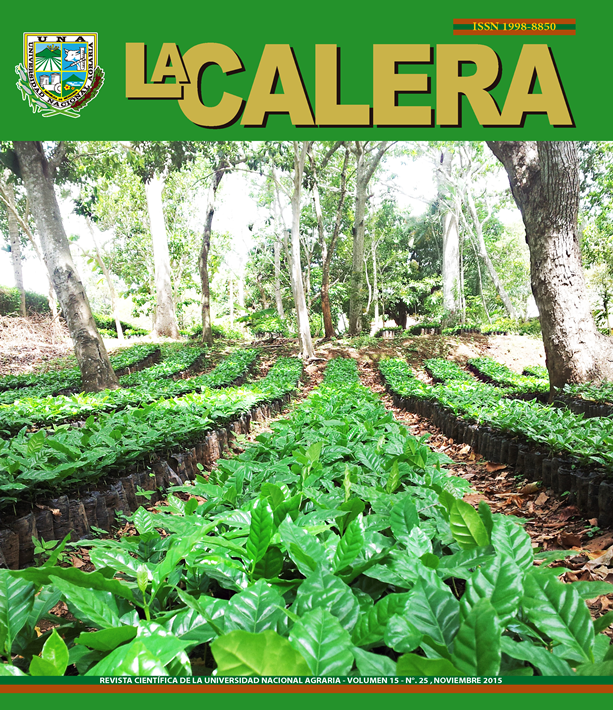Adoption of soil and water conservation technologies and its effect on agricultural incomes and organic matter content
Keywords:
Technology, extension, fertility and soil qualityAbstract
According to the Inter-American Institute for Cooperation on Agriculture, in Nicaragua, the main transfer problems are the lack of technology adoption indicators for soil and water conservation. Due to this, the study is given with the purpose of documenting longterm environmental and socio-economic effects of the process of adoption of soil conservation techniques promoted by the Nicaraguan Institute of Agricultural Technology (INTA) and the Rural Research and Development Foundation (FIDER) in the 1990s. The title of the research is Technological adoption in soil and water conservation and its effect on agricultural income and organic matter contents in rural localities, from 2002 to 2008, was executed with a sample population of 45%, the methodological process started with The planning phase to design the field instruments and select the sample per community, followed by the data collection process in fields, to be analyzed and interpreted with the community. The variables evaluated; (Adoption, Productive Income, Simple Reproduction Threshold and Organic matter content in soils). Land-owning producers were able to adopt up to 16 conservation techniques and maximum no-owners 4 technologies. The living and dead barriers were the most adopted techniques in the two communities and the organized producers were the most adopters. Revenues increase by more than 50% as more technologies are adopted and approach the Simple Playback Threshold. Organic matter contents increase to 2.8% in combined systems and with a longer adoption time.
Downloads
Metrics
References
Barreto, H. 1996. Atlas digital de Nicaragua. Centro Internacional de Agricultura Tropical. Laderas Proyecto. Tegucigalpa, HN. p 5.
Hernández, JC; Araya, R. 2004. Logros en la implementación del fitomejoramiento participativo (FP) en frijol en Costa Rica. In: VIII Reunión anual del sector frijolero de Costa Rica. Agosto 2003. San Carlos, CR. p 3-24.
INIFOM (Instituto Nicaragüense de Fomento Municipal). 2000. Caracterizaciones municipales de Nicaragua.
IICA (Instituto Interamericano de Cooperación para la Agricultura, NI). 2005. Inventario de políticas agroambientales en Nicaragua, descripción de los principales problemas ambientales relacionado con la agricultura. Tecnología. Managua NI. p 6- 8.
Kononova, MM. 1981. Materia orgánica del suelo. Ed. Oikos. Barcelona.
PASOLAC (Programa de Agricultura Sostenible en Laderas de América Central). 2003. Informe anual regional. Los pequeños y medianos productores que adoptan tecnología de manejo sostenible de suelo y agua mejoran sus ingresos y el empleo rural. Managua, Tegucigalpa y San Salvador. p 8.












